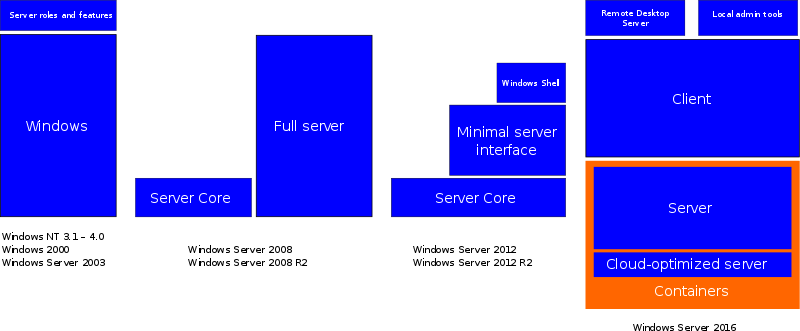Server Core
Server Core is a minimalistic Microsoft Windows Server installation option, debuted in Windows Server 2008. Server Core provides a server environment with functionality scaled back to core server features, and because of limited features, it has reduced servicing and management requirements, attack surface, disk and memory usage. Andrew Mason, a program manager on the Windows Server team, noted that a primary motivation for producing a Server Core variant of Windows Server 2008 was to reduce the attack surface of the operating system, and that about 70% of the security vulnerabilities in Microsoft Windows from the prior five years would not have affected Server Core. Most notably, no Windows Explorer shell is installed. All configuration and maintenance is done entirely through command-line interface windows, or by connecting to the machine remotely using Microsoft Management Console (MMC), remote server administration tools, and PowerShell.
As Server Core implementations matured, it has evolved from an installation option to a configuration level. Server Core is less looked down as a stripped version, instead the full GUI version is being thought of having a rarely needed client layer on top of the server layer
In newer Windows versions there is more granularity in configuration levels:
Windows Server 2008 was the first Windows Server with the Server Core option (in all editions, except IA-64). Though no Windows Explorer shell is installed, Notepad and some control panel applets, such as Regional Settings, are available. Server Core on Windows Server 2008 does not include the .NET Framework, Internet Explorer, Windows PowerShell or many other features not related to core server features. A Server Core machine can be configured for several basic roles: Active Directory Domain Services, Active Directory Application Mode (ADAM), DNS Server, , file server, print server, Windows Media Server, IIS 7 web server and Hyper-V virtual server. Server Core can also be used to create a cluster with high availability using failover clustering or network load balancing.
...
Wikipedia
